The Merry Cemetery is a cemetery in the village of Săpânța, Maramureş county, Romania, that is famous, not just in Romania but all over the world for its one of a kind way of looking upon death, not as a sad event, but as a celebration of a life that ended.
It is famous for its colourful tombstones with naïve paintings describing, in an original and poetic manner, the people who were buried there as well as scenes from their lives.
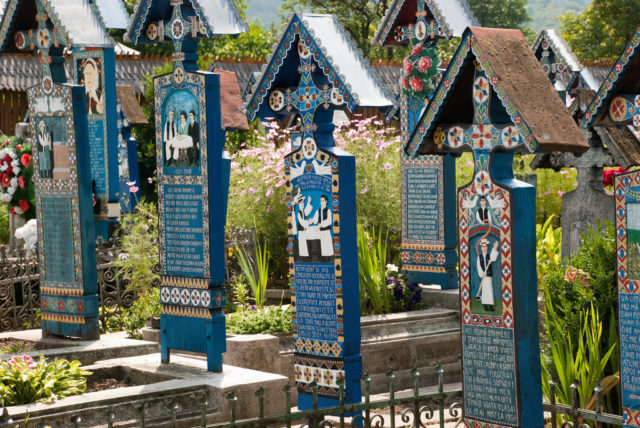
A man by the name of Stan Ioan Patras, a woodworker, a poet and a painter born in 1908, began the tradition of these crosses back in 1935, and after his death in 1977, his work was carried on by one of his apprentices, Dumitru Pop (AKA Tincu).
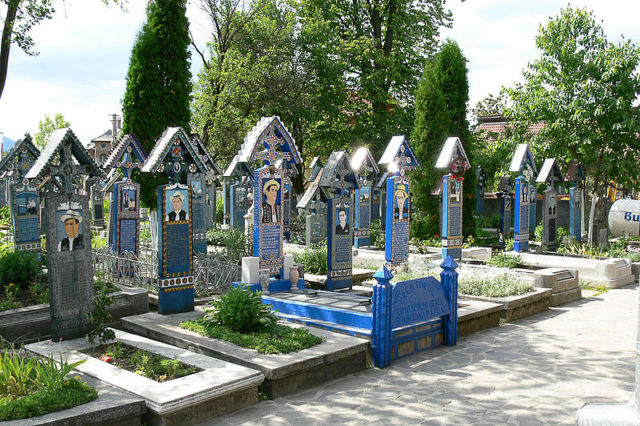
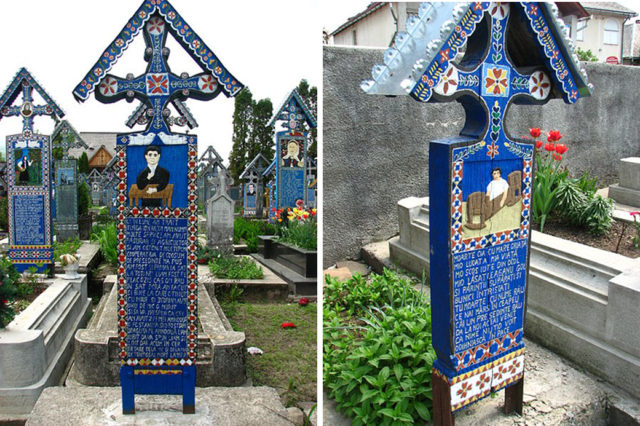
Patras carved the crosses out of oak and painted them blue, sprinkling in bits of color like red, yellow or black. He painted the crosses in order to protect them from rain and frost, thus making them last longer.
In the upper part, there is a painting that depicts the person who passed away in a colorful and dynamic scene of his or her life. Underneath, there is a poem. Patras would usually write these little poems himself after getting to know the deceased through his/her family. As of the 1960s, more than 800 of such oak wood crosses came into sight.
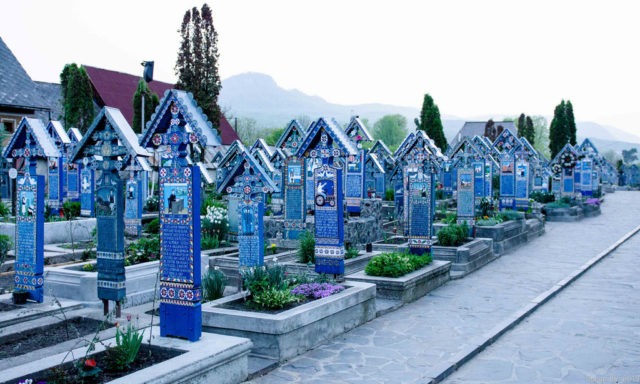
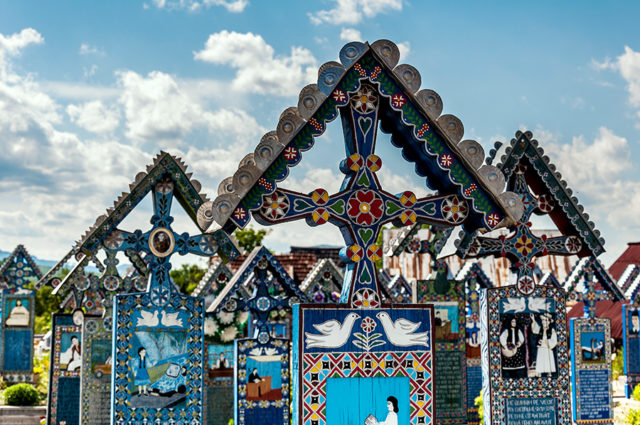
The unusual feature of this cemetery is that it diverges from the prevalent belief, culturally shared within European societies – a belief that views death as something indelibly solemn. Connections with the local Dacian culture have been made, the tribes which inhabited Romania’s territory long before the roman invasion.
They believed that death is just a gate to eternal happiness, a chance to meet Zamolxes, their supreme god.
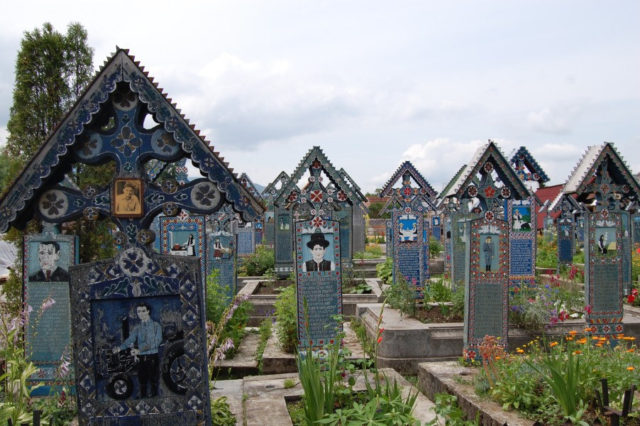
For example, even Stan Ion Patras has a poem carved on his tombstone:
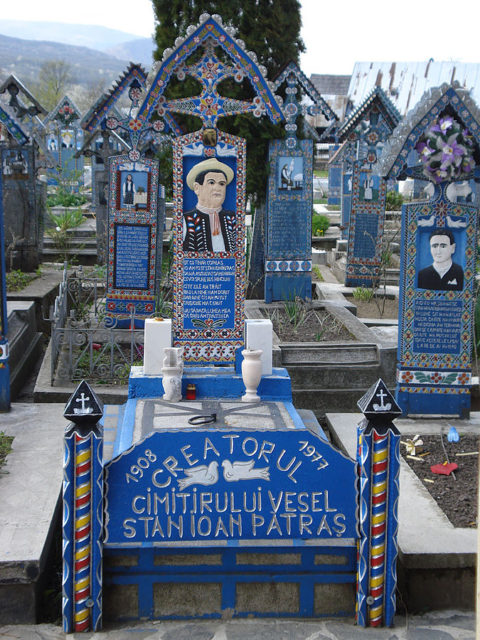
Since I was a little boy
I was known as Stan Ion Pătraş
Listen to me, fellows
There are no lies in what I am going to say
All along my life
I meant no harm to anyone
But did good as much as I could
To anyone who asked
Oh, my poor World
Because It was hard living in it
But some of the epigraphs are often darkly funny:
Under this heavy cross
Lies my poor mother-in-law
Three more days should she have lived
I would lie, and she would read (this cross).
You, who here are passing by
Not to wake her up please try
Cause’ if she comes back home
She’ll criticise me more.
But I will surely behave
So she’ll not return from her grave.
Stay here, my dear mother-in-law!
